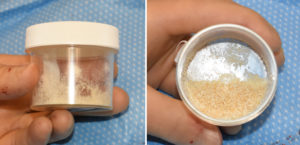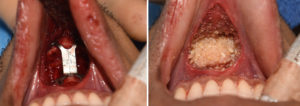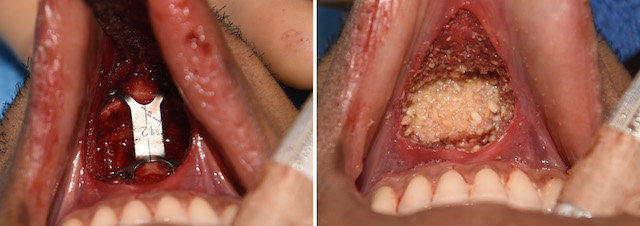The sliding genioplasty procedure is an effective method of horizontal and/or vertical chin augmentation changes. In doing so the natural shape of the chin bone is changed from a smooth convex side profile to a much different sharply angled step configuration. While this shape change does to affect its ability to heal, even though there is decreased bone contact, it does have some potential aesthetic implications.
The resultant classic step deformity of the sliding genioplasty will cause the labiomental fold to deepen. As the fold represents a fixed location due to the attachment of the mentalis muscle. The superior soft tissue chin pad will fall in behind the advanced chin bone segment if it is advanced far enough. This is unavoidable and its management should be considered as part of the sliding genioplasty procedure.
Filling in the step of the sliding genioplasty has been successfully done by a variety of implant and grafting materials. The patient’s own bone would always be the ideal method to restore the convexity of the chin bone shape but few patients want to undergo a bone graft harvest to treat a purely aesthetic issue.



Dr. Barry Eppley
Indianapolis, Indiana




